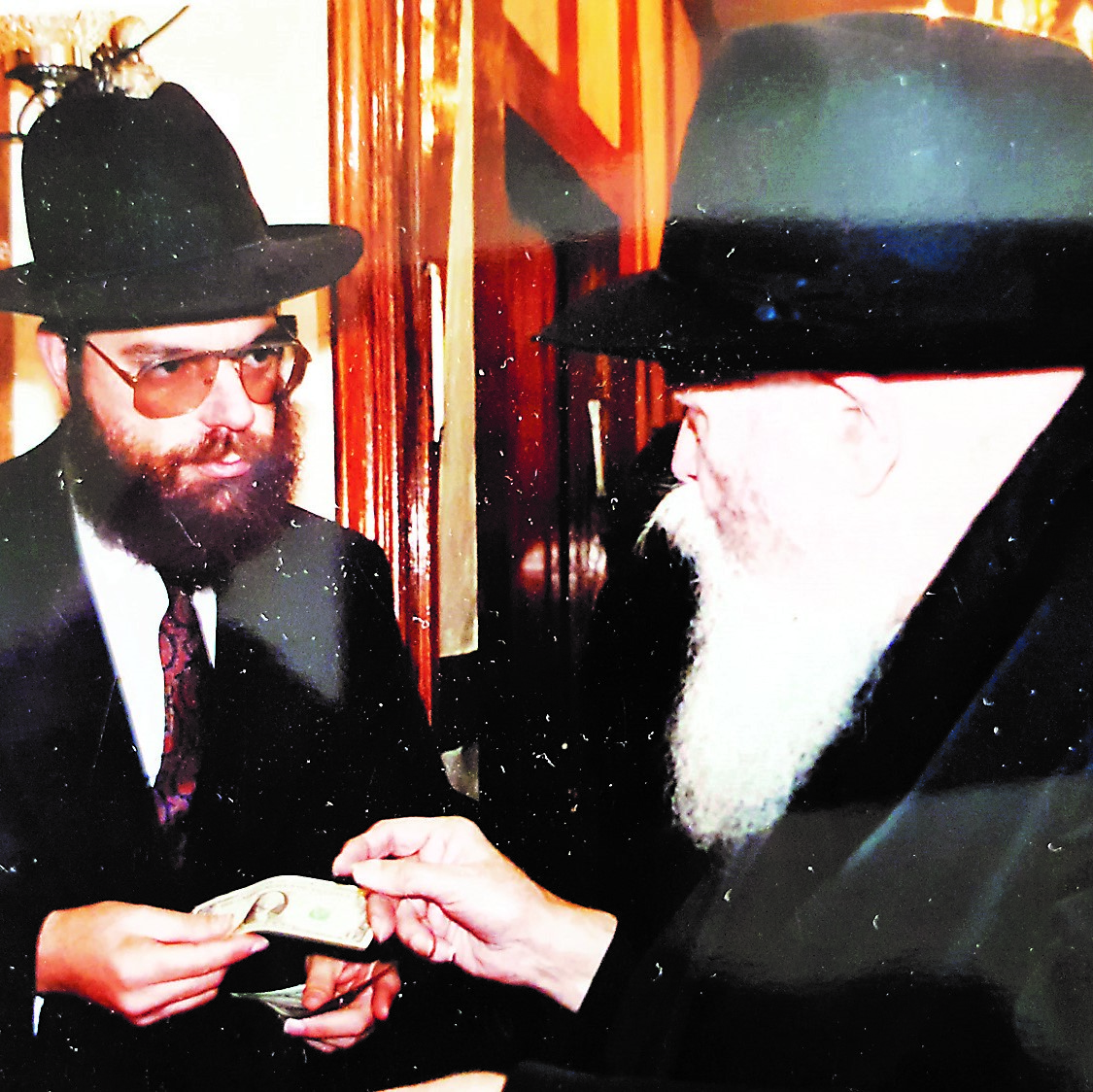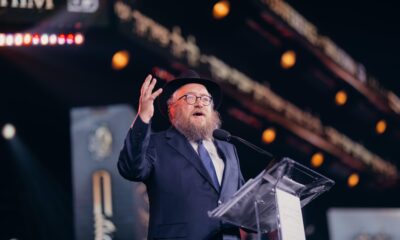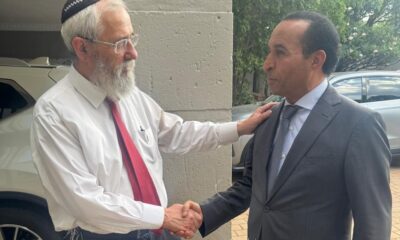
News

“Do not be afraid” – life lessons from the Rebbe
“The Nazis hunted down Jews in hate. The Rebbe taught us to search for and seek out every single Jew in love.”
This was a life lesson that the late Rabbi Lord Jonathan Sacks (former chief rabbi of Britain) gleaned from the late Lubavitcher Rebbe, Menachem Mendel Schneerson. It was one of so many phenomenal lessons rabbis and others learned from this unique and great man whose 120th anniversary was marked on 12 April this year.
Rabbi Yossy Goldman, life rabbi emeritus of Sydenham Shul and president of the South African Rabbinical Association, says “the Rebbe taught never to write off a single Jew, even if they ate pork chops on Yom Kippur”.
“In my 46 years as a rabbi in South Africa, I have seen countless Jews who claimed to be non-believers or were completely cynical about their faith. But with a little love and attention, they are today committed, practising Jews who are raising beautiful Jewish families,” Goldman says.
In 1976, Goldman and his wife, Rebbetzin Rochel, were privileged to be sent to South Africa by the Rebbe to head up the very first Chabad House in Johannesburg. Ten years later, Sydenham Shul invited the duo to become its spiritual leaders.
“I consulted the Rebbe and he encouraged us to make the move,” recalls Goldman. “Sydenham Shul isn’t a Chabad organisation, but the Rebbe loved every Jew. It wasn’t about building his movement but about caring for every Jew regardless of their background or orientation.”
Goldman says the Rebbe didn’t just believe in G-d. “He believed in every Jew. He changed the Jewish world for the better, for which we should all be eternally grateful.”
The Ukrainian-born Rebbe (1902-1994) was the seventh leader in the Chabad-Lubavitch dynasty. During his time as the leader of the Lubavitch movement, Lubavitch institutions and activities became bigger in magnitude and Lubavitch centres or Chabad Houses were opened in many countries across the globe.
In the United States, Judaism, the Torah and Chassidic teachings were bolstered and disseminated through the establishment of three central Lubavitch organisations under the Rebbe’s leadership. Scholars soon recognised the Rebbe’s genius in his notations to numerous Chassidic and kabbalistic treatises.
Today, there are more than 4 000 shluchim (emissaries) of the Rebbe around the world. More than 60 of them reside in South Africa.
The SA Jewish Report also spoke to Rabbi Koppel Bacher, and Rabbi Mendel Lipskar and his wife, Rebbetzin Mashi, about the lessons they learned from their interactions with the Rebbe.
Do not be afraid
On 11 February 1990, the same morning that Nelson Mandela was released from Victor Verster prison, rabbis heading to South Africa from New York were receiving charity from the Rebbe to donate to Africa, recalls Bacher.
Suddenly, the Rebbe turned to Bacher and said in Hebrew, “You asked what message you can take there? Tell them not to be afraid. Moshiach is coming soon. It will be good until he comes, and afterwards even better.”
Bacher later wrote to the Rebbe about his feelings about the situation in South Africa. “People were very worried,” he recalls.
However, “the Rebbe’s repeated reassurances to us that South Africa would be a good place for Jews for all time went a long way to saving our community from complete disintegration,” says Goldman.
Have a warm home
Lipskar and his wife, Mashi, were sent by the Rebbe as the first Chabad emissaries to South Africa just more than 50 years ago.
“Before we were married, we had the incredible privilege of having a private audience with the Rebbe,” recounts Lipskar. “He gave us his blessings, and one of the blessings he gave us is that we should have a warm home.”
The Rebbe told them, “See to it that you should make others warm, and it will naturally be warm for yourselves as well.”
Lipskar and his wife have always tried to implement this lesson.
They have never viewed others as congregants. “They became part of our family, and they see us as part of their family wherever they are in the world,” says Lipskar. “This is how we have to look at others. It wasn’t simply about teshuvah, that we are going to teach you about Torah and mitzvot and tell you how to behave. No, we were going to open our homes and hearts and make you part of who we are. Today, we see others have themselves opened their homes and hearts. It has this incredible ripple effect, which is continuous.”
Pack every day full
Just after the beginning of the Jewish New Year 5749, on 19 September 1988, the Rebbe launched another of his major initiatives. Telling the group of Chabad supporters in attendance that he was “an old friend” and referring to his advanced age, he quipped, “I’m not as old as it says on my passport. If you carry out what I’m requesting now, it will be a sign that you don’t perceive me as an old Jew, but as a young man with young ideas.”
Explaining this, Mashi says, “You have a young person with a lot of wisdom and experience, and an old person who hasn’t really maximised his time or hasn’t studied. He isn’t able to show for the passage of time, and the Rebbe’s teaching is, ‘Pack every day full.’ You have a new day. You have new opportunities. G-d brings you people. He will bring you whatever you need. It’s like a partnership with G-d. You put us here on earth, you want us to connect to people and bring light and joy to your world. We are in, and he does his part.”
Jewish education must be the call of the hour
What was the Rebbe’s single most talked about subject? In Goldman’s opinion, it was chinuch – Jewish education. “We’re fighting a war against assimilation,” he says. “Jewish education must be the call of the hour. Even in Israel, this battle is being waged, and it won’t be won by legislation, but by education.”
Shortly after coming to South Africa in February 1972, Lipskar met somebody who had finished university, but hadn’t yet decided what he was going to do.
“My husband started studying with him every day and found other guys as well,” recalls Mashi. “In the early 1970s, we were in Berea and my husband had a shiur on Tuesday nights with university students. These were hippies. These were searchers. These were people looking to the east.”
Says Lipskar, “These were the children of the 1960s and 1970s with long hair, looking for alternative lifestyles.”
These university students, a few of whom were non-Jews, came and sat with Lipskar in Berea. “They loved it and they called friends gradually,” says Mashi. “That nucleus makes up the grandparents in our community today who have kids who served in Chabad.”










